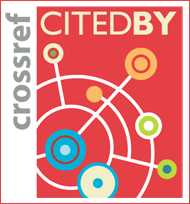ISSN : 1226-7155(Print)
ISSN : 2287-6618(Online)
ISSN : 2287-6618(Online)
Apoptotic Effects of A Cisplatin and Eugenol Co-treatment of G361 Human Melanoma Cells
(received July 19, 2011 ; revised August 26, 2011 ; accepted September 2, 2011)
Abstract
Eugenol (4-allyl-2-methoxyphenol) is a naturally occurringphenolic compound that is widely used in dentistry as a componentof zinc oxide eugenol cement that is commonly appliedto the mouth environment. Cisplatin is one of the most potentknown anticancer agents and shows significant clinical activityagainst a variety of solid tumors. This study was undertaken toinvestigate the synergistic apoptotic effects of co-treatmentswith eugenol and cisplatin on human melanoma (G361) cells.To investigate whether this co-treatment efficiently reduces theviability of G361 cells compared with each single treatment, anMTT assay was conducted. The induction and augmentationof apoptosis were confirmed by DNA electrophoresis, Hoechststaining and an analysis of DNA hypoploidy. Western blotanalysis and immunofluorescent staining were also performedto evaluate the expression levels and the translocation ofapoptosis-related proteins following this co-treatment. Furthermore,proteasome activity and mitochondrial membranepotential (MMP) changes were also assayed. The resultsindicated that a co-treatment with eugenol and cisplatininduced multiple pathways and processes associated with anapoptotic response in G361 cells including nuclear condensation,DNA fragmentation, a reduction in MMP andproteasome activity, the increase and decrease of Bax andBcl-2, a decreased DNA content, the release of cytochrome cinto the cytosol, the translocation of AIF and DFF40 (CAD)into the nucleus, and the activation of caspase-9, caspase-7,caspase-3, PARP and DFF45 (ICAD). In contrast, separatetreatments of 300 μM eugenol or 3 μM cisplatin for 24 h didnot induce apoptosis. Our present data thus suggest that acombination therapy of eugenol and cisplatin is a potentialtreatment strategy for human melanoma.
- 36-3-1.pdf3.35MB









